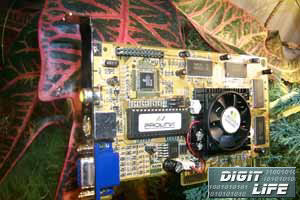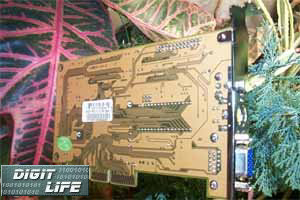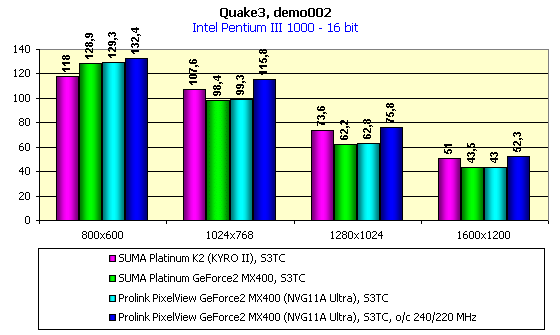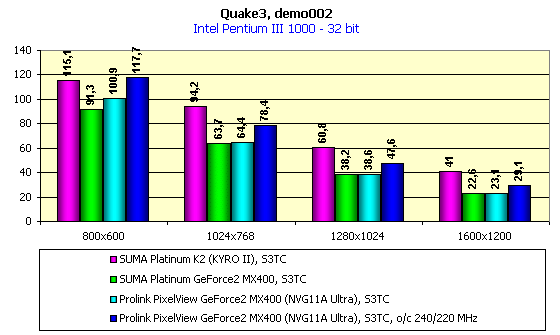 |
||
|
||
| ||
 What do you think, are there a lot of GeForce2 MX cards all around
Today's our review is aimed at the NVIDIA GeForce2 MX400 based video card from Prolink Microsystems. The company mainly develops multimedia products. Its combines (video card + TV-tuner + video capture + FM-tuner) are rather famous. Prolink installs NVIDIA chips into its video cards. Almost the whole range of these GPUs are concentrated in the PixelView series. Today we will examine the Prolink PixelView GeForce2 MX400 (NVG11A Ultra). CardThe Prolink PixelView GeForce2 MX400 (NVG11A Ultra) has AGP x2/x4 interface, 32 MBytes SDR SDRAM memory located in 4 chips on the right side of the PCB.    Samsung produces memory chips with 4.5 ns access time, which corresponds to 222 MHz. Now, I think, you have guessed why there is Ultra in the name. It is not the first time when we are dealing with video cards based on this GPU which are equipped with such fast memory. The ASUS AGP-V7100 Pro has as fast memory as the our sample does. And the Gainward CARDEXpert GeForce2 MX400 Golden Sample has a 4.0 ns memory. Both cards show excellent quality. Unfortunately, the memory from Samsung is difficult to overclock. That is why it doesn't make sense to dream about 250 MHz. The yellow PCB has TV-out with S-Video and RCA connectors. The GPU is equipped with a fan, that is why you may try to overclock this processor.  The card ships in a Retail package which includes:
OverclockingThe Prolink PixelView GeForce2 MX400 (NVG11A Ultra) has reached 240/220 MHz. The memory refused to work at higher than rated frequencies, but even at 225 MHz you may notice artifacts. The rated frequencies of the card are 200/183 MHz. Installation and driversTest system:
For testing we used drivers from NVIDIA of 12.90 version, VSync was off, S3TC technology was activated. For comparative analyses the results of the following cards are used:
Test resultsThe picture in 2D is excellent up to 1280X1024X100 Hz, what is very good for this card. But you should take into account that 2D quality greatly depends on a definite sample. For estimation of 3D quality we used id Software Quake3 v.1.17 - a game-test which demonstrates the card's operation in OpenGL with usage of a standard benchmark demo002. Quake3 Arenademo002The tests were carried out in two modes: Fast (16-bit color) and High Quality (32-bit color).   The Prolink PixelView GeForce2 MX400 (NVG11A Ultra) goes on a par with its competitor on the same processor at the rated frequencies. The overclocking helps much. The KYRO II based video card, however, is always ahead of the GeForce2 MX400 cards, and even overclocking of the NVG11A Ultra didn't bring it the victory. ConclusionThis NVIDIA GeForce2 MX400 based video card differs from its competitors in the fast memory (but I'm not sure that other lots of this model will be equipped with the memory from Samsung). At the rated frequencies the Prolink PixelView GeForce2 MX400 (NVG11A Ultra) shows a usual performance level for the cards of this class. The quality, stability and reliability are blameless. The overclocking lifts the potential of this card very much. The complete characteristics of video cards of this and other classes can be find in our 3Digest. Highs:
Lows:
Write a comment below. No registration needed!
|
Platform · Video · Multimedia · Mobile · Other || About us & Privacy policy · Twitter · Facebook Copyright © Byrds Research & Publishing, Ltd., 1997–2011. All rights reserved. |